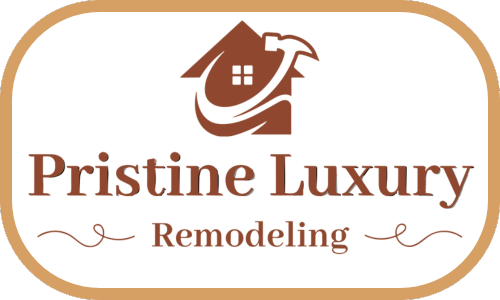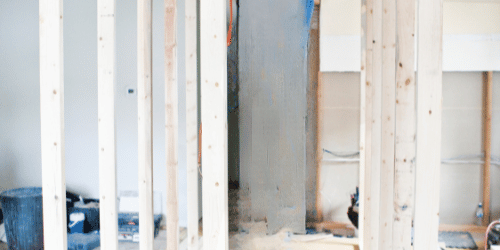When embarking on a home remodeling project, it’s essential to consider not only aesthetics but also the impact on indoor air quality. Paint fumes, in particular, can affect our health and well-being. In this blog post, we’ll explore practical strategies to minimize paint-related risks and enhance the air you breathe.
Paint fumes contain volatile organic compounds (VOCs) that can adversely affect indoor air quality. Proper handling and ventilation are crucial to mitigate these risks.
Understanding Paint Fumes
What Are Paint Fumes
Most indoor paints release VOCs into the air, which are chemical pollutants emitted as gases from certain solids or liquids. VOCs (Volatile Organic Compounds) can contribute to indoor air pollution and have potential health effects, including headaches, dizziness, and respiratory issues. When selecting paint for your home, consider low-VOC or zero-VOC options to minimize these risks and promote a healthier indoor environment. These environmentally friendly paints help reduce the release of harmful chemicals, making your living spaces safer and more comfortable for you and your family.
Health Risks Associated with VOC Exposure
Breathing in VOCs can lead to various health issues. Short-term effects include headaches, dizziness, and eye irritation, which can occur soon after exposure. Long-term exposure to VOCs may contribute to more serious respiratory problems and even increase the risk of cancer. Therefore, it is important to take precautions when using products that emit VOCs, such as choosing low-VOC or zero-VOC paints and ensuring good ventilation during and after painting. By being mindful of VOC exposure, you can help protect your health and create a safer indoor environment.
Sources of VOCs
Paints, whether oil-based or water-based, are crucial for providing vibrant color and protection to a wide range of surfaces. Oil-based paints are known for their durability and smooth finish, making them ideal for high-traffic areas, while water-based paints are appreciated for their quick drying times and lower levels of volatile organic compounds (VOCs), making them a more environmentally friendly option. In addition to paints, stains, varnishes, and sealants play a significant role in enhancing the natural beauty of wood and other materials. Stains penetrate the surface to bring out the grain and texture of the wood, adding depth and character, while varnishes create a hard, protective layer that guards against scratches, moisture, and wear.
Minimizing Paint Fume Impact
Choose Low-VOC or Zero-VOC Paints
Opting for paints labeled as low-VOC or zero-VOC is a wise choice for those concerned about indoor air quality and environmental impact. These formulations emit fewer harmful chemicals compared to traditional paints, reducing the amount of volatile organic compounds released into the air. This not only makes them a safer option for indoor environments, especially in spaces where people spend a lot of time, but also contributes to a healthier and more sustainable living space. By choosing low-VOC or zero-VOC paints, you can enjoy the benefits of a beautiful, vibrant finish while minimizing your exposure to toxic fumes and contributing to a cleaner, greener planet.
Proper Ventilation
To ensure a safe and effective painting environment, it’s important to maintain good air circulation. Begin by opening windows and doors to let in fresh air and create a flow of ventilation. This simple step helps to dilute and remove any fumes or odors produced by the paint. To further enhance air movement, employ exhaust fans, which will assist in expelling stale air and bringing in a steady stream of fresh air. Proper ventilation not only aids in the drying process but also contributes to a healthier indoor atmosphere by minimizing the potential buildup of harmful paint fumes.
Timing Matters
For optimal painting results, select a time when the weather is mild, as this allows you to keep windows open and ensure good ventilation throughout the process. Adequate airflow helps the paint dry evenly and reduces the buildup of fumes. It’s advisable to steer clear of painting during periods of extreme heat or cold. High temperatures can cause the paint to dry too quickly, leading to an uneven finish, while cold temperatures may slow down the drying process and cause the paint to remain tacky for longer. Mild weather provides a stable environment that promotes a smooth and consistent application, resulting in a more durable and visually appealing finish.
Post-Painting Strategies
Allow Proper Drying Time
To create a safe and pleasant environment, it’s essential to allow painted surfaces to dry completely before using the space. Ensuring that the paint dries thoroughly is crucial not just for achieving a smooth and long-lasting finish but also for minimizing any lingering fumes. Proper drying helps to dissipate the volatile organic compounds (VOCs) released by the paint, reducing the risk of prolonged exposure to these potentially harmful chemicals. By giving the paint ample time to cure fully, you contribute to better indoor air quality and create a more comfortable and healthy atmosphere in the newly painted area.
Air Purification
To improve air quality in freshly painted spaces, use air purifiers equipped with HEPA filters. These purifiers are effective at removing airborne particles, including volatile organic compounds (VOCs) released by the paint. HEPA filters trap even the smallest particles, helping to reduce the concentration of potentially harmful substances in the air. By incorporating air purifiers into your painting process, you enhance the overall indoor environment and ensure a healthier and more comfortable living space.
Monitor Indoor Humidity
High humidity levels can impede the drying process of paint, causing it to take longer to set and potentially leading to an uneven finish or an increased risk of imperfections. To address this issue, consider using dehumidifiers in the painting area. These devices work by removing excess moisture from the air, which helps to accelerate the drying process and promote a more even application. By managing the humidity levels effectively, you not only enhance the quality of the paint job but also minimize the risk of complications such as blistering or peeling. Ensuring optimal drying conditions with the aid of dehumidifiers contributes to a smoother, more durable finish and a better overall result.
Choosing the Right Paint for Your Project
Understanding Paint Types
When selecting paint for your project, it’s crucial to understand the different types available to find the best fit for your needs. Water-Based (Latex) Paints are popular for interior walls due to their quick drying time, low VOC emissions, and easy cleanup, making them ideal for DIY projects. Oil-Based Paints are suitable for trim, cabinets, and high-traffic areas, offering a durable finish despite their longer drying time and higher VOC content, which necessitates proper ventilation during application. Additionally, Specialty Paints, such as chalk paint, metallic finishes, and textured paints, each have unique characteristics and applications—chalk paint delivers a matte, vintage look, metallic finishes provide a reflective sheen, and textured paints create various surface effects.
Color Considerations
Choosing the right color for your space significantly impacts its overall ambiance. Neutral Colors are versatile and timeless, creating a calm and balanced atmosphere that complements various styles and furnishings. Bold Colors, on the other hand, can add drama and personality to a room; however, it’s best to use them sparingly or as accent walls to avoid overwhelming the space. Additionally, consider the Undertones of the paint—warm undertones like yellow or red can create a cozy, inviting feel, while cool undertones such as blue or green can make a room feel more refreshing and serene. It’s essential to test color samples in different lighting conditions to see how they interact with the space and ensure you achieve the desired effect.
Practical Tips for Paint Selection
To make an informed decision about your paint choice, follow these tips: Start by testing Sample Swatches directly on your walls to see how the colors look in your actual space. Observe the swatches at different times of day to understand how the color changes with natural light. Additionally, consider Lighting as it plays a crucial role in color perception; natural light and various artificial lighting sources can alter how a color appears in your room. For further guidance, Consult Experts by visiting a paint store and discussing your project’s specifics with professionals who can provide tailored advice and recommendations based on your needs and preferences.
Answering Common Questions
Q1 Can I Paint During Pregnancy?
A1 Consult your doctor and opt for low-VOC paints along with proper ventilation.
Q2 How Long Do Paint Fumes Last?
A2 It varies but can last several days to weeks and ventilation and air purifiers help speed up the process.
Q3 Is It Safe to Sleep in a Newly Painted Room?
A3 Wait until the fumes dissipate and ventilate the room thoroughly.
The Impact of Humidity on Paint Drying
High humidity prolongs drying time and use a hygrometer to monitor indoor humidity levels.
Seeking Expert Advice
Consult professional painters or indoor air quality specialists and they can recommend safe practices and effective solutions.
Conclusion
Congratulations on completing your home remodeling project! As you enjoy your fresh, updated living space, keep these key takeaways in mind. Prioritize health and comfort by remembering that indoor air quality significantly impacts your well-being. Opt for low-VOC or zero-VOC paints to minimize health risks, and ensure proper ventilation and air purification. Choose wisely by selecting the right paint type based on your project needs and considering color psychology and undertones to create the desired ambiance. Seek professional guidance for personalized advice and address any concerns promptly to ensure a safe and pleasant environment.
Visit us at Pristine Luxury Remodeling
For more information and personalized guidance visit us at Pristine Luxury Remodeling, We specialize in providing exceptional remodeling services that elevate your space into a masterpiece of luxury.







